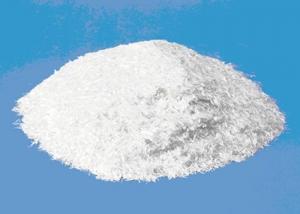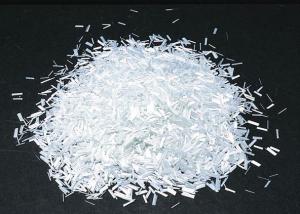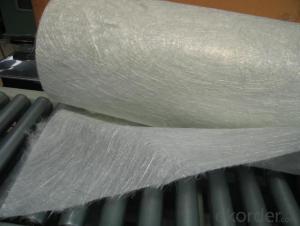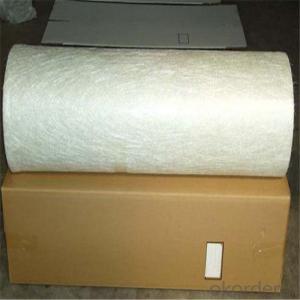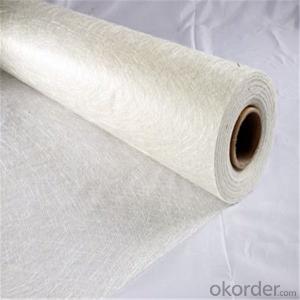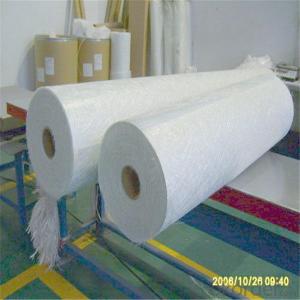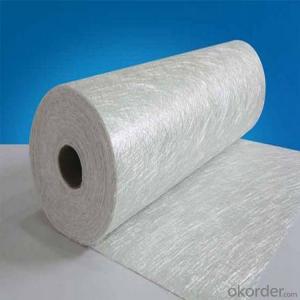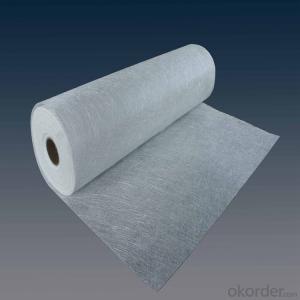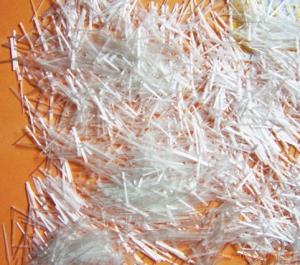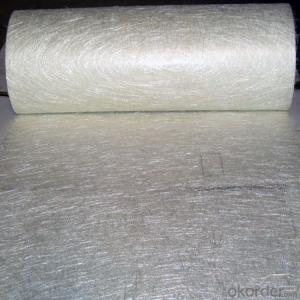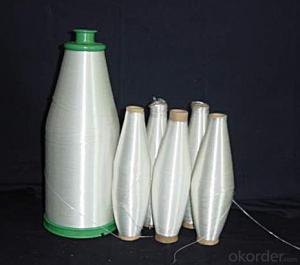E-Glass Fiber Chopped Strands For BMC
- Loading Port:
- China Main Port
- Payment Terms:
- TT or L/C
- Min Order Qty:
- 1 ton kg
- Supply Capability:
- 500 Tons Per Month kg/month
OKorder Service Pledge
OKorder Financial Service
You Might Also Like
Introduction of E-Glass Fiber Chopped Strands For BMC
E-Glass Chopped Strands for BMCare widely used in transportation,construction,electronics,chemical industry and light industry,such as the automotive parts,insulator,and switch boxes.
Product Features of E-Glass Fiber Chopped Strands For BMC
1.Low viscosity and excellent flowability of the BMC paste
2.Low static and low fuzz, fast and good dispersion in resins
3.Good processing and excellent mechanical properties
Packaging of E-Glass Fiber Chopped Strands For BMC
The product can be packed in bulk bags, heavy-duty box and composite plastic woven bags;
For example:Bulk bags can hold 500kg-1000kg each; Cardboard boxes and composite plastic woven bags can hold 15kg-25kg each.
Storage of E-Glass Fiber Chopped Strands For BMC
Unless otherwise specified, fiberglass products should be stored in a dry, cool and rain-proof area. It is recommended that the room temperature and humidity should be always maintained at 15ć-35ćand 35%-65% respectively.
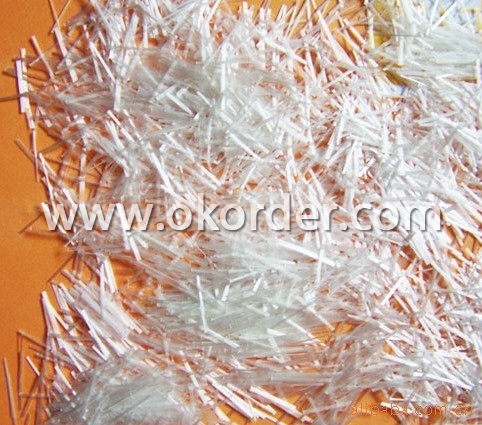
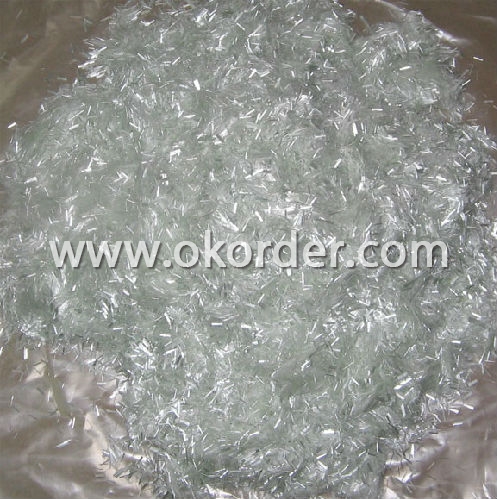
- Q:Can fiberglass chopped strand be used in transportation applications?
- Yes, fiberglass chopped strand can be used in transportation applications. It has several properties that make it suitable for such applications. Firstly, fiberglass chopped strand is lightweight, which is an important consideration in transportation where weight reduction is desired for fuel efficiency. Additionally, it has high strength-to-weight ratio, making it capable of withstanding the stresses and loads experienced in transportation applications. Moreover, fiberglass chopped strand has excellent corrosion resistance, which is particularly beneficial in transportation where exposure to moisture, salt, and other corrosive elements is common. It also has good dimensional stability, meaning it retains its shape and size even under changing temperatures and conditions. Fiberglass chopped strand can be used in various transportation components such as body panels, roofs, interiors, and structural parts. It can help improve the overall performance, durability, and safety of the transportation vehicles. Furthermore, it can be easily molded into complex shapes, allowing for design flexibility and customization in transportation applications. In summary, fiberglass chopped strand is a suitable material for transportation applications due to its lightweight, high strength-to-weight ratio, corrosion resistance, dimensional stability, and design flexibility.
- Q:How does the fiber content affect the coefficient of thermal expansion of chopped strand composites?
- The fiber content in chopped strand composites has a direct influence on the coefficient of thermal expansion. As the fiber content increases, the coefficient of thermal expansion tends to decrease. This is because the fibers provide reinforcement and resistance to thermal expansion, leading to reduced expansion and contraction of the composite material. Therefore, higher fiber content generally results in lower coefficients of thermal expansion in chopped strand composites.
- Q:What are the flexural strength properties of fiberglass chopped strand?
- The flexural strength properties of fiberglass chopped strand are characterized by its ability to withstand bending forces without breaking or deforming. It exhibits high tensile strength and stiffness, making it suitable for applications where structural integrity under flexural stress is crucial. Additionally, fiberglass chopped strand offers excellent fatigue resistance, thermal stability, and dimensional stability, making it a popular choice in industries such as automotive, construction, and aerospace.
- Q:What is short cut fiber? What's the nature of it?
- Technical standard:The content of R2O is less than or equal to 0.80% types: even my agent: silane applicable resin: PA, PP, PBT, ABS, BMC fiber diameter: 9 - 13 m moisture content: less than 0.1%
- Q:Is fiberglass chopped strand suitable for the production of roofing materials?
- Yes, fiberglass chopped strand is suitable for the production of roofing materials. Fiberglass chopped strand is a type of reinforcement material that is commonly used in the production of various products, including roofing materials. It offers excellent strength and durability, making it ideal for withstanding the harsh weather conditions that roofs are exposed to. Additionally, fiberglass chopped strand is lightweight, which reduces the load on the roof structure. It is also resistant to corrosion and has good thermal insulation properties. These qualities make it a suitable choice for the production of roofing materials, ensuring long-lasting and reliable roofs.
- Q:How does the fiber content affect the thermal conductivity of chopped strand composites?
- The thermal conductivity of chopped strand composites is significantly affected by the fiber content. Generally, as the fiber content increases, the thermal conductivity of the composite decreases. This is because the fibers act as barriers to the flow of heat, thus insulating the material. The ability of a material to conduct heat determines its thermal conductivity. In chopped strand composites, the fibers are dispersed within a matrix material, which can be either a polymer or a resin. This dispersion of fibers creates a network of thermal resistances in the composite, which ultimately reduces its overall thermal conductivity. When the fiber content is low, the spacing between the fibers is larger, allowing for more pathways for heat transfer within the matrix material. Consequently, this leads to higher thermal conductivity. Conversely, as the fiber content increases, the spacing between the fibers decreases, resulting in a higher number of thermal resistances and ultimately reducing the thermal conductivity. Furthermore, the aspect ratio of the fibers also contributes to the thermal conductivity of chopped strand composites. Longer fibers with a higher aspect ratio offer more resistance to heat transfer, thereby further reducing the thermal conductivity. It is crucial to note that other factors, such as the properties of the matrix material, the alignment and orientation of the fibers, and the interfacial bonding between the fibers and the matrix, can also impact the thermal conductivity of chopped strand composites. Therefore, it is essential to have a comprehensive understanding of these factors in order to accurately predict and control the thermal conductivity of these materials.
- Q:How is the color of fiberglass chopped strand determined?
- The color of fiberglass chopped strand is determined by the type and amount of pigments or dyes added to the resin during the manufacturing process.
- Q:Brief introduction of glass fiber cloth
- Statin (similar to unidirectional cloth). It is different from the ordinary fabric, but also can be used in the production of glass fiber reinforced, three-dimensional woven fabrics and other forms of three-dimensional fabric. In certain applications will also further roving short cut, as well as for corrosion resistant occasions, which is generally used in glass mat. The shape of a solid fabric is massive. Alkali free glass fiber tape is commonly used in the manufacture of high strength, rectangular, unidirectional fabrics. Single warp fabric is a kind of coarse and fine warp weft four by breaking satin or long satin fabric, wet mechanical strength shall meet the requirements, greatly improves the shear strength of composites and resistance damage tolerance, and then use the barbed needle acupuncture. It is a continuous glass strand by throwing silk device randomly thrown in continuous mesh belt, such as winding, mould. The dumbbell shaped fabric, flat selvedge and weft density; the fabric made of laminated material to avoid the pollution of the process . The fiber in the continuous glass fiber felt is continuous. The most typical braid is a layer of warp and weft overlap together. Glass cloth is mainly used for producing all kinds of electric insulation laminate.
- Q:How is the impact resistance of fiberglass chopped strand composites tested?
- The impact resistance of fiberglass chopped strand composites is typically tested using various standardized testing methods. One of the commonly used methods is the Charpy impact test, which determines the energy absorbed by a material when subjected to a sudden impact load. In this test, a notched specimen of the composite is clamped horizontally and struck by a pendulum. The energy required to fracture the specimen is measured and used as an indicator of impact resistance. Another method used is the Falling Dart test, where a weighted dart is dropped from a specified height onto a plate made of the composite material. The height at which the dart fails to penetrate the plate is recorded and serves as a measure of impact resistance. Additionally, some manufacturers may conduct drop weight tests or dynamic mechanical analysis (DMA) to evaluate the impact response of the fiberglass chopped strand composites. These tests involve subjecting the composite to controlled impacts or cyclic loading to determine how it behaves under real-world impact conditions. Overall, the impact resistance of fiberglass chopped strand composites is determined through carefully designed testing methods that simulate real-world scenarios, ensuring that the material can withstand sudden impacts without fracture or significant damage.
- Q:How does the fiber diameter affect the properties of fiberglass chopped strand?
- The properties of fiberglass chopped strand are significantly influenced by the diameter of its fibers. The strength, flexibility, and overall performance of the fiberglass are directly impacted by the fiber diameter. When the fiber diameter is smaller, it generally leads to increased strength and stiffness of the chopped strand. This is because the smaller fibers can tightly pack together, resulting in a higher fiber volume fraction and enhancing the material's load-bearing capacity. Additionally, smaller fibers tend to have fewer defects, further improving their strength. On the other hand, larger fiber diameters can contribute to increased flexibility and impact resistance of the chopped strand. The larger fibers provide more space for movement and deformation, allowing the material to absorb and dissipate energy during impacts or bending. This can be advantageous in applications where toughness and resilience are crucial, like automotive parts or sports equipment. The fiber diameter also affects the surface area of the chopped strand. Smaller fibers have a greater surface area per unit volume, which enhances the bonding and adhesion of the fibers with the resin matrix. This results in improved mechanical properties, including increased tensile strength and better resistance to delamination. Moreover, the processing characteristics of the chopped strand are influenced by the fiber diameter. Smaller fibers disperse more easily in the resin, leading to a more homogeneous mixture and overall better performance. Conversely, larger fibers may require additional processing steps, such as chopping or grinding, to achieve proper dispersion and ensure uniformity in the final product. To summarize, the fiber diameter of fiberglass chopped strand is crucial in determining its mechanical, processing, and performance properties. The selection of the appropriate fiber diameter depends on the specific requirements of the application, considering factors like strength, flexibility, impact resistance, and processability.
1. Manufacturer Overview |
|
|---|---|
| Location | Chongqing, China |
| Year Established | 1971 |
| Annual Output Value | Above US$ 50 Million |
| Main Markets | North America, Eastern Europe, Southeast Asia, Mid East, Eastern Asia |
| Company Certifications | ISO9001 |
2. Manufacturer Certificates |
|
|---|---|
| a) Certification Name | |
| Range | |
| Reference | |
| Validity Period | |
3. Manufacturer Capability |
|
|---|---|
| a)Trade Capacity | |
| Nearest Port | Chongqing |
| Export Percentage | 40%-50% |
| No.of Employees in Trade Department | 21-50 People |
| Language Spoken: | English |
| b)Factory Information | |
| Factory Size: | Above 2000,000 square meters |
| No. of Production Lines | Above 4 |
| Contract Manufacturing | |
| Product Price Range | Average |
Send your message to us
E-Glass Fiber Chopped Strands For BMC
- Loading Port:
- China Main Port
- Payment Terms:
- TT or L/C
- Min Order Qty:
- 1 ton kg
- Supply Capability:
- 500 Tons Per Month kg/month
OKorder Service Pledge
OKorder Financial Service
Similar products
New products
Hot products
Hot Searches
Related keywords

